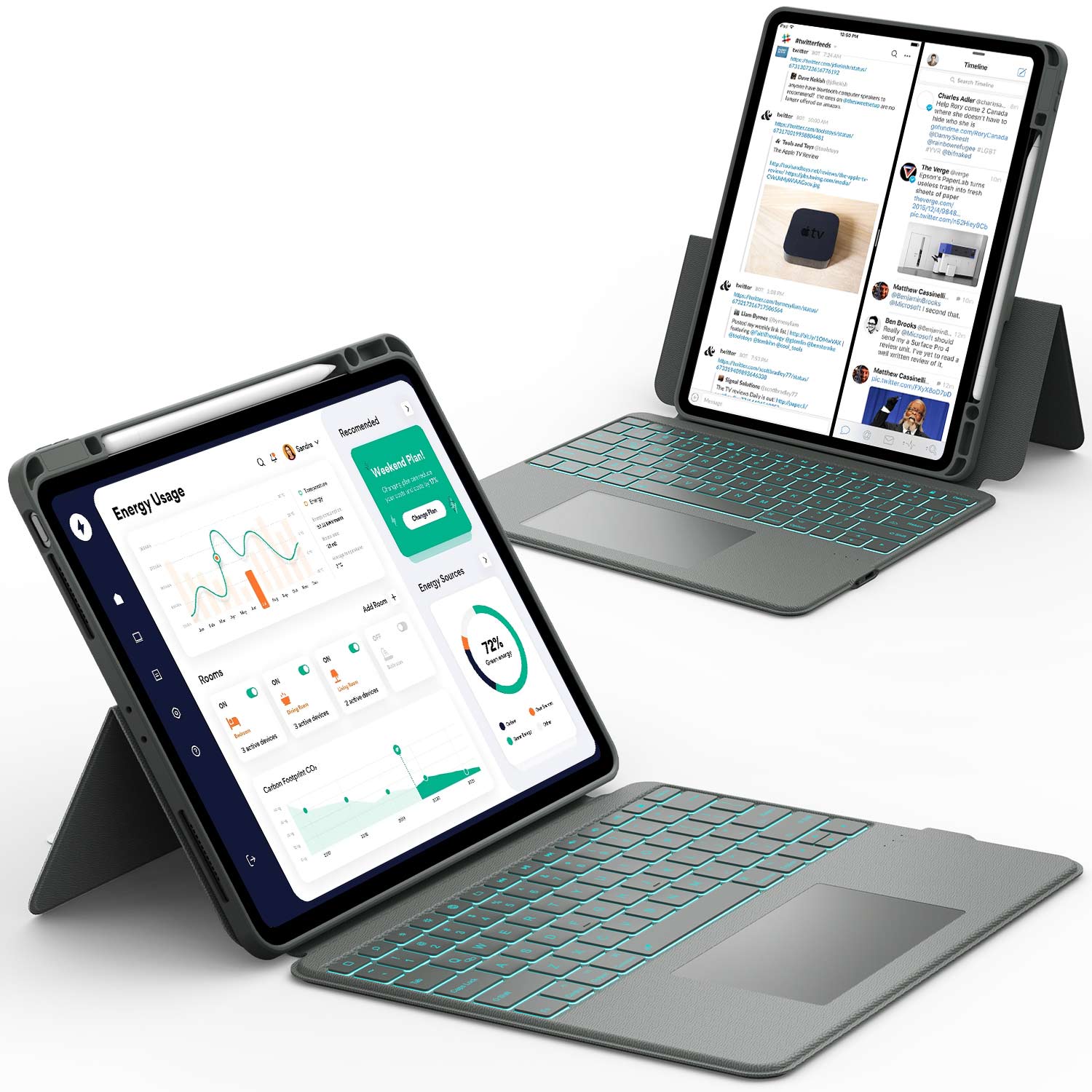It's pretty common these days to see parents wondering about their kids and screen time. You know, like, 'Is my kid spending too much time on that iPad?' or 'What do I even do if they're hooked?' iPads and other gadgets can be super handy for learning stuff and keeping kids busy, especially if you need a few minutes to yourself or you're on a long trip. But sometimes, that easy entertainment can turn into a real problem. It can cause fights at home and pull kids away from chores, schoolwork, and just hanging out with friends. If you're reading this, you're probably looking for some answers. So, to help you figure out if your child might be getting a bit too attached to their iPad, here are some things child experts say to look out for.
Key Takeaways
- Look for big emotional reactions, like meltdowns or extreme sadness, when the iPad is taken away.
- Watch out for kids being sneaky or lying about how much time they've spent on their device.
- Notice if your child's mood changes a lot, especially if they seem to need the iPad to stay happy.
- Pay attention if they lose interest in activities they used to love, like sports or going out with friends.
- Be aware if they keep pushing for more screen time, even after you've set limits.
1. Tantrums

Okay, so every kid throws a tantrum now and then. It's part of growing up, right? But when those tantrums become super frequent, or intense, especially when you try to take away the iPad, that's a red flag. It might mean your child is way too attached to their device. It's like they're going through withdrawal, and nobody wants to see their kid that upset over a tablet.
Think about it: is the tantrum a normal kid being upset, or is it something more? Is it a meltdown because they can't have the iPad for five more minutes? That's a big difference.
If you're seeing this kind of reaction regularly, it's time to take a closer look at their child behavior and how much time they're spending glued to that screen. Maybe it's time to cut back and find some other fun things to do.
2. Lies

Okay, so this one's a bit tough because, let's face it, kids lie sometimes. It's part of growing up, figuring out boundaries, and testing the waters. But when it comes to iPad use, an increase in lying can be a red flag. Are they suddenly claiming they finished their homework when they were actually sneaking in an extra hour of Minecraft? Are they hiding the iPad under their bed after you've told them it's time to put it away? These little fibs can add up.
It's not just about the lying itself, but what it represents. It often indicates a deeper issue, like feeling ashamed about their iPad use or feeling unable to control it. It's a sign that the iPad has become something they feel they need to hide, and that's not a good sign.
Here are some things to watch out for:
- Hiding the iPad: Finding it in unusual places, like under the bed or in a closet.
- Denying usage: Claiming they haven't been on it when you know they have.
- Exaggerating accomplishments: Saying they finished their chores or homework when they haven't, just to get more screen time.
It's important to address this behavior with empathy and understanding. Getting angry or accusatory will likely just make them more secretive. Instead, try to have an open and honest conversation about why they feel the need to lie about their screen usage. Maybe they're worried about disappointing you, or maybe they genuinely feel like they can't control their urge to play. Understanding the root cause is the first step to finding a solution.
3. Mood

Okay, so you've noticed the tantrums and maybe even some fibs. But what about your child's overall mood? Is it consistently sour, or are there wild swings that seem to come out of nowhere? This is a big one.
- Increased Irritability: Are they snapping at you more often? Do small things set them off? This could be a sign they're craving that iPad time.
- Anxiety or Restlessness: When they're not using the iPad, do they seem on edge, unable to relax or focus on other activities? It's like they're waiting for their next fix.
- Depression or Sadness: A noticeable drop in their overall happiness, loss of interest in things they used to enjoy, or frequent complaints of feeling down could be linked to excessive screen time. Child screen addiction can really mess with their emotions.
It's not just about being grumpy. We're talking about a real shift in their baseline mood. If they're constantly irritable, anxious, or sad, it's time to take a closer look at their iPad usage and how it might be affecting them.
It's easy to dismiss mood changes as just part of growing up, but if they're coupled with other signs on this list, it's worth considering the possibility of an unhealthy relationship with their device. Parents are concerned about losing valuable time due to conflicts with their children over digital addiction. Maybe it's time to set some boundaries and find some fun alternatives.
4. Swimming Pool
Okay, so maybe "swimming pool" sounds weird, but hear me out. I'm using it as a metaphor. Think of it this way: is your kid diving headfirst into their iPad and ignoring everything else around them, like they're trying to set a new record for holding their breath underwater?
It's like they're in a digital swimming pool, and the real world is just...gone. They might be physically present, but mentally, they're miles away, lost in whatever game or video they're watching. It's more than just being entertained; it's a complete detachment from reality. This immersion can be a sign of a bigger problem.
Here's what I've noticed with my nephew:
- He'll be asked to do something, and he won't even register it because he's so engrossed in his iPad.
- Meal times become a battle because he wants to keep watching something.
- Family outings are less about the outing and more about when he can get back to his device.
It's not about banning the iPad altogether, but about helping them come up for air. We need to teach them that the real world is just as interesting, if not more so, than what's on that screen. It's about finding a balance and making sure they don't drown in the digital deep end.
5. Football
Okay, so maybe your kid isn't literally ignoring football or other sports, but are they ditching activities they used to love in favor of their iPad? This was a big red flag for us. My son, who used to be all about building Lego sets, suddenly couldn't be bothered. It was always, "Just five more minutes, Mom!" before he'd even consider putting down the tablet. It's tough when you see their passions fading.
It's not just about the specific activity; it's about the pattern. If they're consistently choosing the iPad over things that used to bring them joy, it's time to take a closer look.
Here's what I noticed:
- Less interest in playing outside.
- Saying no to playdates with friends.
- Complaining about being bored when the iPad isn't available.
It's a bummer to see them lose interest in real-world fun. We had to actively encourage him to rediscover his old hobbies. We even made it a family thing, like reducing screen time and having a Lego-building night once a week. It took time, but he eventually started to enjoy it again. It's all about finding that balance.
6. Boundaries

Okay, so you've noticed some signs, maybe even a few from the list above. What's next? Setting boundaries is key. It's not about being mean; it's about helping your child develop a healthy relationship with technology. It's like teaching them to eat their vegetables – they might not like it at first, but it's good for them in the long run.
Boundaries are not punishments; they are guidelines to help children learn self-control and make good choices.
Here's how you can approach setting boundaries:
- Establish clear time limits: Decide how much screen time is allowed each day or week. Be specific. "A little bit" is too vague. Try, "One hour after homework is done."
- Create tech-free zones: Bedrooms and mealtimes should be device-free. This helps with sleep and family connection. No iPads at the dinner table, period.
- Be consistent: This is probably the hardest part. If you give in once, it sets a precedent. Stick to your guns, even when they whine.
- Offer alternatives: Suggest other activities like playing outside, reading, or doing crafts. Boredom can be a great motivator for creativity.
- Lead by example: Put your own devices down. Kids notice when you're glued to your phone, and it makes it harder for them to accept the rules.
It might be tough at first, but with consistency and understanding, you can help your child find a better balance.
Looking to make your child’s iPad time more productive? The Chesona Keyboard Case for iPad can turn screen time into learning time. With a kid-friendly design, a comfortable keyboard, and a sturdy stand, it’s perfect for homework, writing stories, or exploring educational apps. It also keeps the iPad safe from accidental drops.
Wrapping Things Up
So, there you have it. Figuring out if your kid is spending too much time on their iPad can be tricky, but knowing what to look for is a good start. It's not about totally banning screens, because let's be real, that's just not how things work these days. It's more about finding a good balance and making sure those devices don't take over everything. If you're seeing some of these signs, don't freak out. Just try to put some healthy habits in place, maybe set up some rules together, and remember, you're not alone in this. Lots of parents are trying to figure out the same stuff.
As you help your child find a healthy balance with their iPad, consider accessories that make screen time count. The Chesona Keyboard Case for iPad offers a protective design, a responsive keyboard, and a secure Apple Pencil holder—perfect for turning playtime into study time. Whether it’s homework or creative projects, this case keeps their iPad safe and productive.
Frequently Asked Questions
How can I tell if my child is too dependent on their iPad?
If your child gets really upset, mad, or anxious when their iPad is taken away, or if they seem down and bothered, it could mean they're too attached to it. This is similar to how adults might feel if they can't have something they're used to, like coffee.
What if my child stops caring about their favorite activities?
A big sign is if your child starts losing interest in things they used to love, like swimming or playing outside with friends, and instead spends more and more time on their device. It's like their old hobbies don't excite them anymore because the iPad is always there.
Should I worry if my child lies about their iPad use?
If you notice your child being sneaky, like hiding how much time they spend on their iPad or lying about using it, that's a red flag. They might be trying to get more screen time without you knowing, which shows they know it's a problem.
Can an iPad affect my child's mood?
If your child's mood seems to depend on whether they have their iPad, it might be a sign. For example, if they're grumpy until they get their device and then suddenly cheer up, they might be using it to control how they feel, rather than learning to handle their emotions themselves.
What if my child keeps wanting more screen time?
Yes, if your child's screen time keeps growing, and they always want more, it's something to watch. What used to be a quick game might turn into hours, and they might start pushing the rules you've set. This shows their need for the device is increasing.
How can I help my child reduce their iPad use?
Try to set rules about iPad use together with your child. When they help make the rules, they're more likely to follow them. Also, make sure to offer fun, real-world activities for them to do after screen time, so they have something exciting to look forward to besides the tablet.
















